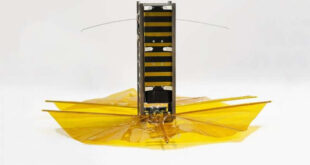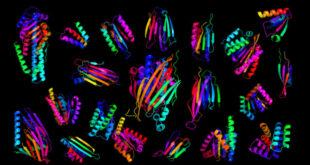The combination of decaffeinated green tea extract and voluntary exercise can effectively mitigate nonalcoholic fatty liver disease, suggests a new study conducted in mice.

Khoo et al investigated the effects of decaffeinated green tea extract, voluntary exercise or the combination on the development of obesity-related nonalcoholic fatty liver disease (NAFLD) and found that treatment of mice with the combination mitigated the development of NAFLD to a greater extent than either treatment alone. Image credit: Ascyrafft Adnan.
Because of the high prevalence of risk factors such as obesity and type 2 diabetes, fatty liver disease is forecast to afflict more than 100 million people by 2030. And there are currently no validated therapies for the disease.
In previous studies, Pennsylvania State University’s Dr. Joshua Lambert and his colleagues demonstrated that green tea extract and exercise together sharply reduced body mass and improved cardiovascular health of high-fat-fed mice.
“I believe people should engage in more physical activity, and replacing high-calorie beverages with decaffeinated, diet green tea — which has no calories — is a smart move,” Dr. Lambert said.
“Combining the two might have health benefits for people, but we don’t have the clinical data yet.”
In the new study, mice fed a high-fat diet for 16 weeks that consumed green tea extract and exercised regularly by running on a wheel were found to have just a quarter of the lipid deposits in their livers compared to those seen in the livers of a control group of mice.
Mice that were treated with green tea extract alone or exercise alone had roughly half as much fat in their livers as the control group.
In addition to analyzing the liver tissues of mice, the authors also measured the protein and fat content in their feces.
They found that the mice that consumed green tea extract and exercised had higher fecal lipid and protein levels.

Mice that consumed green tea extract and exercised regularly had just a quarter of the lipid deposits in their livers compared to those seen in the livers of a control group of mice. Mice that were treated with green tea extract alone or exercise alone had roughly half as much fat in their livers as the control group. Image credit: Joshua Lambert Research Group / Pennsylvania State University.
“By examining the livers of these mice after the study concluded and by screening their feces during the research, we saw that the mice that consumed green tea extract and exercised actually were processing nutrients differently — their bodies were handling food differently,” Dr. Lambert said.
“We think the polyphenols in green tea interact with digestive enzymes secreted in the small intestine and partially inhibit the breakdown of carbohydrates, fat and protein in food.”
“So, if a mouse doesn’t digest the fat in its diet, that fat and the calories associated with it pass through the mouse’s digestive system, and a certain amount of it ends up coming out in its feces.”
“It may be significant that mice treated with both green tea extract and exercise had higher expression of genes related to the formation of new mitochondria. That gene expression is important, because it provides markers that will help researchers understand the mechanism by which green tea polyphenols and exercise might work together to mitigate fatty liver deposits.”
“We measured the expression of genes that we know are related to energy metabolism and play an important role in energy utilization. In the mice that had the combination treatment, we saw an increase in the expression of genes that wasn’t there before they consumed green tea extract and exercised.”
The findings were published in the Journal of Nutritional Biochemistry.
_____
Weslie Y. Khoo et al. 2020. Mitigation of nonalcoholic fatty liver disease in high-fat-fed mice by the combination of decaffeinated green tea extract and voluntary exercise. Journal of Nutritional Biochemistry 76: 108262; doi: 10.1016/j.jnutbio.2019.108262
 #Bizwhiznetwork.com Innovation ΛI |Technology News
#Bizwhiznetwork.com Innovation ΛI |Technology News



